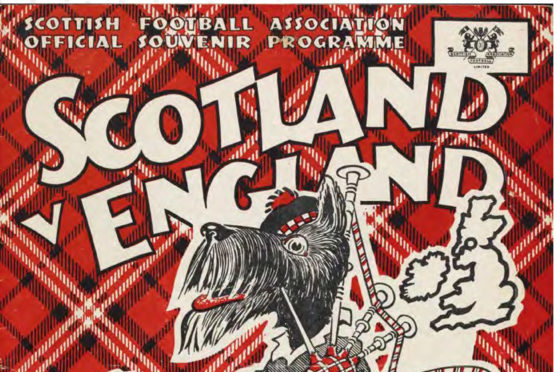
We live in an age of mobile phones, superfast internet connection and instant facts.
But despite the changes, one constant for football fans up and down the country remains their matchday programme.
A poll by The Sunday Post has shown that, despite falling sales, more than 80% of Scotland’s league clubs will continue to issue a printed programme this season.
Experts said the content of many nowadays was better than ever before, and argued these cherished mementoes remained a vital means of preserving a clubs’ history.
Peter Rundo, one of Scotland’s leading programme dealers and Dundee United’s publication editor, said: “Programmes will be with us for many years to come.
“Sales might be down but I don’t think they’ll ever disappear completely – especially for big games, such as cup finals, European games and internationals.
“We also see people now looking for team sheets if there’s no programme.
“It’s much easier and more pleasant to look up a programme to find out how many games someone has played than to fiddle about with your phone. And the products, especially for some of the big clubs, are superb nowadays.
“There’s a user-friendly feel and quality that you just don’t get from a mobile phone and they’re also a memento of the occasion.”
There’s no obligation within SPFL rules for clubs to produce a matchday programme.
But our poll showed 35 of the league’s 42 clubs were sticking with a printed programme for the coming season.
A small number, such as Livingston and Inverness, instead publish a downloadable online version.
Ross County, Forfar, Peterhead, Brechin and Queen’s Park are the others who won’t be issuing a printed copy this season.
Programmes for several Scottish clubs exist from before the Second World War but routine issuing by most began when paper rationing ended in the post-war era.
One of the earliest Scottish Cup Final programmes sold for £1,610 last year at auction.
The 24-page issue marking the match between Rangers and Third Lanark in 1936 was priced threepence. The game, in front of 88,859 fans at Hampden Park, was won 1-0 by Rangers following a goal by Bob McPhail in the second minute.
The programme was sold on auction site eBay by a dealer in the south of Scotland to an unidentified buyer. Rangers, whose first programme was issued for a game against Celtic in January 1929, last season launched a digital programme in addition to printed copies.
Arbroath are this season increasing their programme from 16 pages to 24 following promotion to the Championship. Their cover price will be £2.50. League newcomers Cove Rangers will be producing magazines priced £2.
Hamilton said they’ll print £2.50 issues for all games. Proceeds go to their community outreach and youth academy set-ups.
Motherwell said: “We will continue to publish and sell our 72-page match programme at every home match, with a £3 cover price.”
Bill Gilby, editor of Raith’s programme, the Rovers Review, said: “We are issuing a programme this season at £2 for 40 pages, which we think is excellent value.
“The programme remains important to us and it’s a record of the game. It also becomes part of the club’s history and we send a copy of each issue to the National Library of Scotland in Edinburgh.
“The chances of historic club website content still being available in 10, 20 or 50 years is probably unlikely.
“Therefore, interviews and information about the club will probably disappear forever if not for the printed programme.
“It’s a memento of the game and for those who wish to preserve the club’s history it remains significant.”
The Scottish Football Museum at Hampden Park includes programmes for the 1960 Eintracht v Real Madrid European Cup Final and the Lisbon Lions 1967 European Cup Final among its collection of cherished valuables.
Assistant curator Demi Boyd said: “Programmes have been a core part of the fan experience of a match day for decades.
“It’s important for clubs to look at how fans are engaging with information and to react it.
“I’m not sure if turning solely to social media rather than producing programmes is inclusive for every generation of fan and may make information inaccessible to some.”

Enjoy the convenience of having The Sunday Post delivered as a digital ePaper straight to your smartphone, tablet or computer.
Subscribe for only £5.49 a month and enjoy all the benefits of the printed paper as a digital replica.
Subscribe